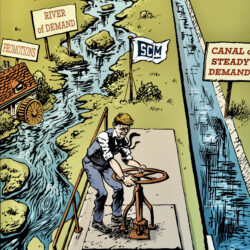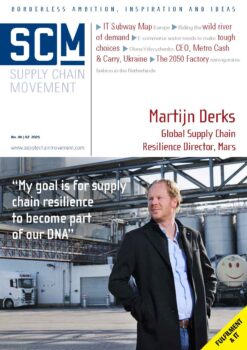Riding the wild river of demand

The value of external data as input for supply chain planning has been a topic of discussion for some time, but there is now growing evidence that outside-in planning has become a must. Without external data, it is simply impossible to gain sufficient insight into the ‘river of demand,’ generate a reliable forecast and curb the bullwhip effect in a timely manner.
In the spare parts business, the demand is clear-cut; if your car has a broken brake disc, you need a new one – not two, three or a whole boxful of them, just one. A special offer or promotion makes no sense in this case. Consumers won’t buy an extra brake disc because the second one is half price.
Despite the clarity of demand, an international automotive spare parts distributor in Zurich experienced a bullwhip effect in its supply chain. Much to her surprise, Nicole Miara discovered that it was largely of the company’s own making. “We operate in a long-tail supply chain, which means we maintain a very broad product portfolio with relatively little demand per product. So what had happened? The local-level forecast is inaccurate due to irregular demand. As a result, this forecast is consistently too low and we adjust inventory levels at our local depots manually. That inventory comes from our central distribution centres, where these fluctuations lead to shortages. At the same time, the forecast for our central distribution centres is consistently too high. This results in us constantly playing catch-up in our regional distribution centres, and that led to the bullwhip effect,” says Miara, who joined the parts distributor as Digital Transformation Lead just over a year ago.
River of demand
Miara discovered the cause of the bullwhip effect through her participation in Project Zebra. One of the first exercises was to draw the ‘river of demand’. Visualizing how the demand signal flows through the supply chain revealed how long it takes for the signal to reach the parts distributor’s planners, and how much the signal gets distorted along the way. … … …
Want to read more?
 Get your digital subscription of Supply Chain Movement Q2, 2023 now! >>
Get your digital subscription of Supply Chain Movement Q2, 2023 now! >>










